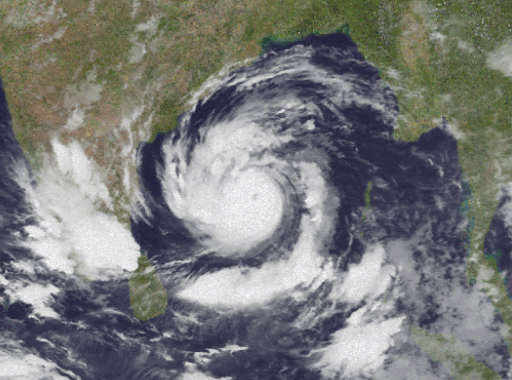Bhubaneswar: The low-pressure area over the Bay of Bengal is likely to intensify into a severe cyclonic storm. Named ‘Dana’ by Qatar, it is expected to make landfall in Odisha’s Puri and West Bengal’s Sagar Island between October 24 and October 25, according to the India Meteorological Department (IMD).
The cyclonic storm
Extremely heavy rainfall in Odisha and West Bengal are very likely over the next three days. Here’s a look at how cyclones brewing over the Bay of Bengal are named.
RSMC (New Delhi) names cyclones
Globally, there are six Regional Specialized Meteorological Centres (RSMCs) and five regional Tropical Cyclone Warning Centres (TCWCs) responsible for issuing advisories and naming tropical cyclones. The IMD is one of the six RSMCs that provide tropical cyclone and storm surge advisories to 13 countries under the WMO/ESCAP (World Meteorological Organization/United Nations Economic and Social Commission for Asia and the Pacific), including Bangladesh, India, Iran, Maldives, Myanmar, Oman, Pakistan, Qatar, Saudi Arabia, Sri Lanka, Thailand, United Arab Emirates, and Yemen.
READ MORE | Odisha: TPSODL gears up to tackle Cyclone ‘Dana’
RSMC New Delhi is specifically tasked with naming tropical cyclones that develop over the North Indian Ocean, which includes both the Bay of Bengal and the Arabian Sea.
Out of the 13 member countries in the WMO/ESCAP panel, five countries—Iran, Qatar, Saudi Arabia, UAE, and Yemen—are recent additions. The other eight founding members began naming tropical cyclones over the North Indian Ocean in 2004. Each of these eight countries initially suggested eight names, resulting in a total of 64 names. Some of these names, like Gaja (Sri Lanka), Sagar (India), Phailin (Thailand), Hud Hud (Oman), Bulbul (Pakistan), and Fani (Bangladesh), have already been used in the years since.
How was the new set of 169 names finalised?
During the 45th session of the WMO/ESCAP Panel on Tropical Cyclones (PTC) held in Muscat in September 2018, it was decided to create a new list of cyclone names, including contributions from all 13 member countries. Mrutyunjay Mohapatra, the current Director-General of IMD, was appointed Rapporteur to coordinate with panel members and finalise the list following standard procedures. The initial report was presented by India during the 46th session of the WMO/ESCAP PTC in Nay Pyi Taw, Myanmar, in September 2019. After further discussions, the list was unanimously adopted by WMO/ESCAP PTC in April 2020.
As a result, the current list comprises 169 names, with 13 names contributed by each of the 13 member countries.
Criteria for naming cyclones
- The name should be neutral regarding (a) politics and political figures (b) religious beliefs (c) cultures (d) gender
- The name should be inoffensive and not hurt the sentiments of any group of people globally.
- It should not be harsh or cruel in nature.
- The name should be short, easy to pronounce, and not offensive to any member.
- The maximum length of the name is eight letters.
- Cyclone names in the North Indian Ocean will not be repeated; once a name is used, it will not be used again.
- The name must not appear on any existing list of RSMCs worldwide, including RSMC New Delhi.
- RSMC New Delhi is responsible for naming tropical cyclones in the North Indian Ocean, including the Bay of Bengal and the Arabian Sea, as soon as they gather sustained wind speeds of 34 knots (62 km/h) or more.
- If a tropical cyclone from the South China Sea crosses Thailand and enters the Bay of Bengal, its name will not be changed.
- The names proposed by panel members are listed alphabetically by country.
Here are the 13 names proposed by India:
Gati, Tej, Murasu, Aag, Vyom, Jhar, Probaho, Neer, Prabhanjan, Ghurni, Ambud, Jaladhi, Vega.
PNN

